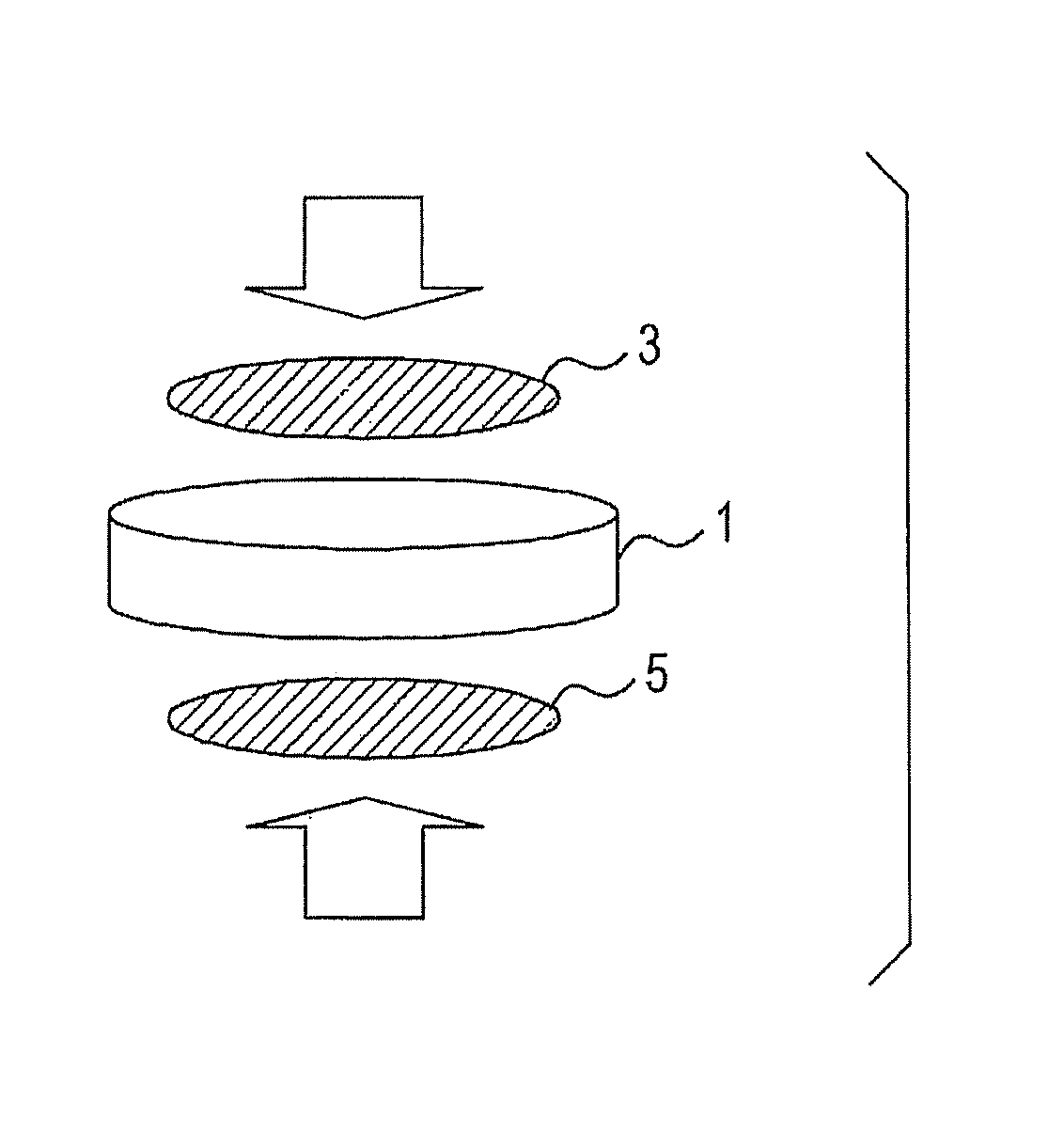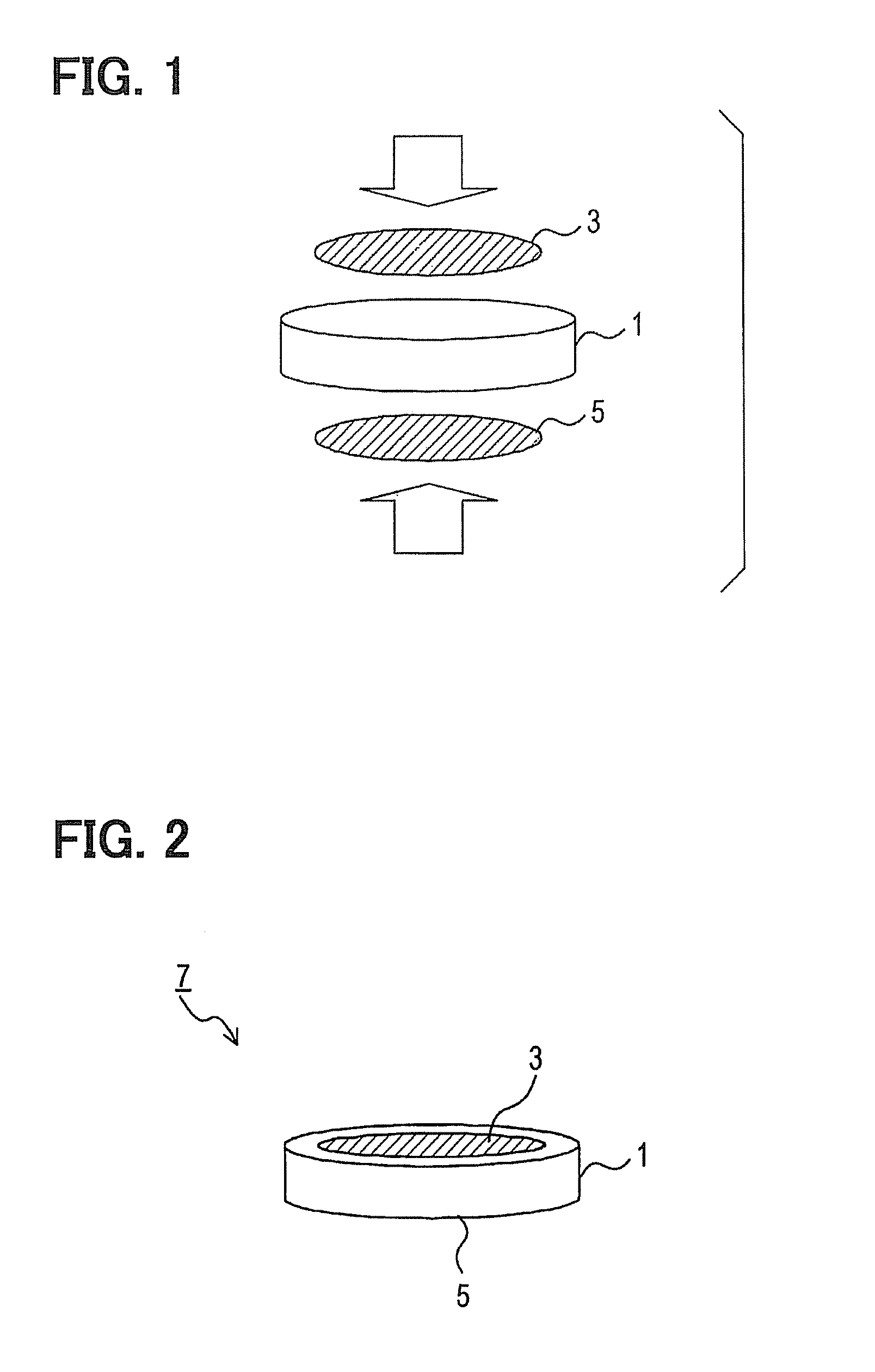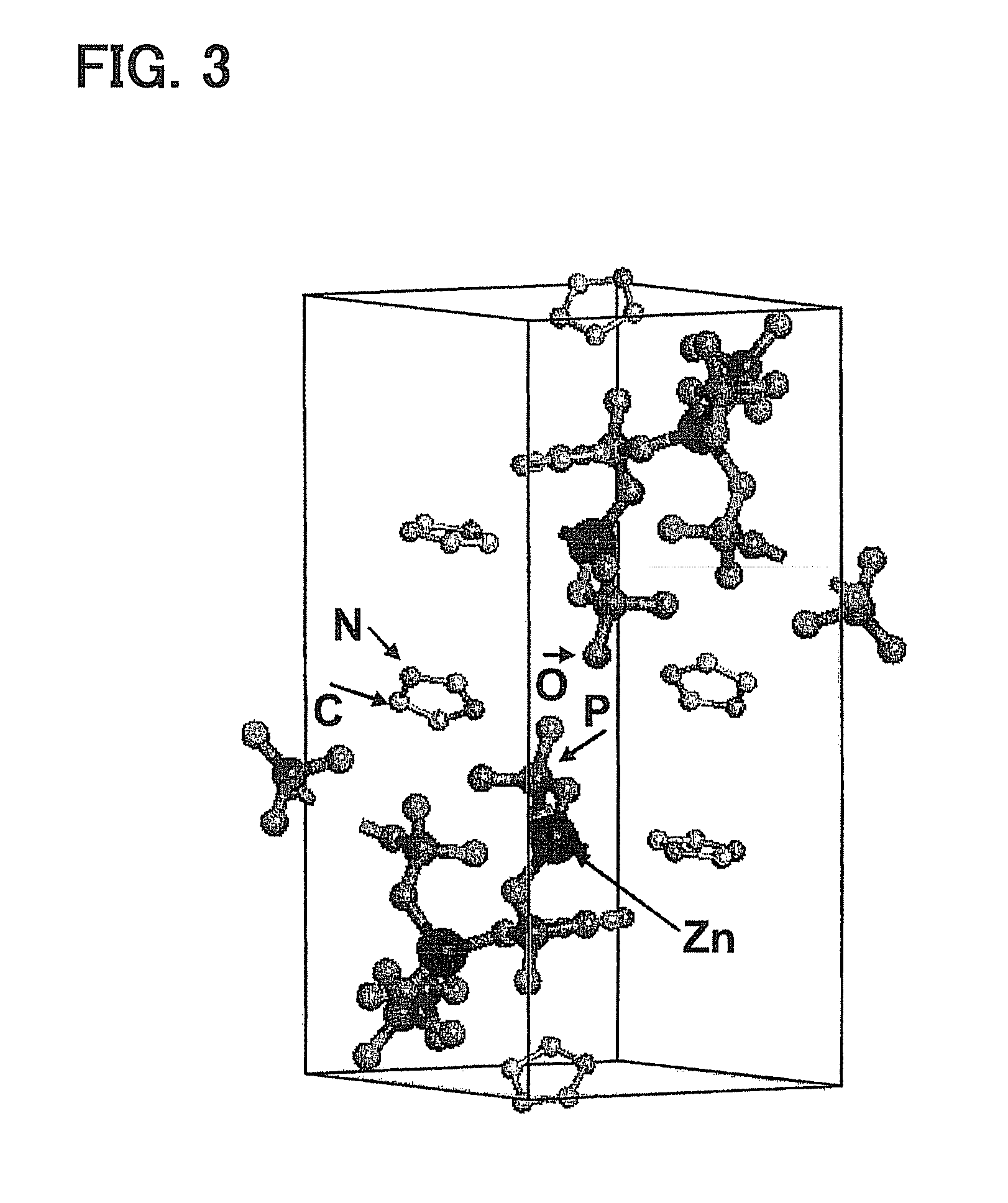Proton conductor, method for manufacturing proton conductor, and fuel cell
a proton conductor and fuel cell technology, applied in the field of proton conductor manufacturing method, proton conductor, and fuel cell, can solve the problems of insufficient customary electrolyte materials fail to have satisfactory ionic conductivity and stability, and the fuel cell cannot meet the requirements of ionic conduction, so as to improve the exhaust heat efficiency, suppress the poisoning of electrode catalysts, and satisfy the effect of ionic conductivity
- Summary
- Abstract
- Description
- Claims
- Application Information
AI Technical Summary
Benefits of technology
Problems solved by technology
Method used
Image
Examples
example 1
[0049]In a mortar were weighed 210 mg of zinc oxide, 530 μL of a 85% phosphoric acid aqueous solution, and 350 mg of imidazole, followed by mixing and stirring at room temperature in the atmosphere for 15 minutes. The mixture was dried at 80° C. for 15 hours and yielded a white powder (proton conductor).
[0050]The powder was subjected to X-ray crystallography. Data from the X-ray crystallography demonstrate that the powder had a crystal structure as follows. Phosphate ions coordinate to zinc ion to form a one-dimensional coordination polymer. Imidazole forms hydrogen bonding with the coordination polymer through the phosphate ion of the coordination polymer and a proton. FIG. 3 illustrates the data from X-ray crystallography. The powder was further subjected to 31P-MAS-NMR measurement to find that the powder included no phosphoric acid condensate.
[0051]The prepared proton conductor was formed into a cylinder having a diameter of 10 mm as illustrated in FIG. 1 to give an electrolyte 1...
examples 2 to 17
[0059]Proton conductors and single cells as in Table 2 were prepared by the procedure of Example 1, except for varying the types of metal ion and molecule capable of undergoing protonation or deprotonation, and the compositional ratio of materials. These were subjected to X-ray crystallography and measurements of ionic conductivity and lattice parameter. Measured ionic conductivity and lattice parameter are indicated in Table 1. Ionic conductivities in Table 1 are values as measured at temperatures (in “Measurement temperature”) given in Table 1. FIGS. 5 and 6 illustrate ionic conductivities of some proton conductor samples. FIG. 4 illustrates data obtained from X-ray crystallography of Example 6.
[0060]
TABLE 1IonicMeasurementLattice parameter (a, b, and c are in angstrom;conductivitytemperatureand α, β, and γ are in degree)(S / cm)(° C.)abcαβγEx. 11.6 × 10−31509.055921.5269.180490114.20390Ex. 21.6 × 10−2160——————Ex. 37.6 × 10−3140——————Ex. 42.0 × 10−2200——————Ex. 56.8 × 10−3200——————E...
example 18
[0066]Materials were weighed which were 420 mg of zinc oxide, 1.06 mL of a 85% phosphoric acid aqueous solution, 140 mg of imidazole, and 255 mg of titanium oxide powder as an additive. The materials were stirred and mixed in an agate mortar at room temperature in the atmosphere for 15 minutes. The mixture was dried at 80° C. for 15 hours and yielded a white powder (proton conductor containing 10 percent by weight of TiO2).
PUM
| Property | Measurement | Unit |
|---|---|---|
| temperature | aaaaa | aaaaa |
| operating temperature | aaaaa | aaaaa |
| temperature | aaaaa | aaaaa |
Abstract
Description
Claims
Application Information
 Login to View More
Login to View More - R&D
- Intellectual Property
- Life Sciences
- Materials
- Tech Scout
- Unparalleled Data Quality
- Higher Quality Content
- 60% Fewer Hallucinations
Browse by: Latest US Patents, China's latest patents, Technical Efficacy Thesaurus, Application Domain, Technology Topic, Popular Technical Reports.
© 2025 PatSnap. All rights reserved.Legal|Privacy policy|Modern Slavery Act Transparency Statement|Sitemap|About US| Contact US: help@patsnap.com



